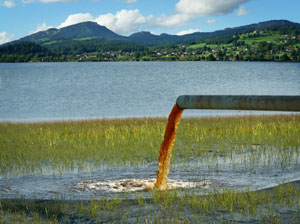Safe Climate Caucus Forum, 10 am, September 17, 2013:
Hugh Fitzsimons, Carrizo Springs, TX
My name is Hugh Fitzsimons. I ranch in Dimmit County, Texas, a hundred and fifty miles southwest of San Antonio and nine miles east of the Rio Grande River. We are dead on the 100th meridian, the historic dividing line between wet and dry. The Spanish maps from the early 18th century labeled this country the “despoblado” …. “no man’s land.” No one wanted it, save for the native Coahuiltecans, who fit with a land forever on the edge of drought. It’s long been a land of environmental extremes – feast or famine – but a reckoning now seems at hand.
My grandfather bought the ranch in 1932 for two things a cattleman needs:
abundant native grasses and good, clean, underground water. He came to it after roping wild steers on the prairies and river bottoms of Gonzales County, Texas. But he had an itch to get rich, so in 1901 he hung up his rope to head for Texas’ thriving oil field: Spindletop. That oil field ushered in the internal combustion engine.
By the 1930’s, tired of the oil business, grandfather started life anew. For twenty five years, he raised registered Hereford and Angus cattle and summered steers in the flint hills of Kansas, selling them grass fat to the U.S. Army.
But in 1951, we began what has been called the “drought of record” — a seven year stretch without moisture. One day, on the front porch of the bunkhouse, my grandfather declared: “I am leaving this ranch, and I am not coming back till it rains.” He never came back, and we had no significant rain for another three years. My father recognized the signs. For the next thirty years, he ran a Hereford and Red Brahma cow calf operation – and leased land for hunting and for exploration of oil and gas.
After a career teaching Texas history, I moved back to the ranch fifteen years ago, in 1998, to work with nature, not against her. I settled on two avenues of production.
For the first, I chose the American Buffalo or bison, an indigenous animal with the means to survive. Here was a low-maintenance, self-sustaining herbivore, whose 10,000-year evolution prepared it for what climate change was sending my way.
For the second, I chose honey. I contracted with beekeepers to harvest the nectar of our native guajillo bush. All that was required was water, bees, and the guajillo blooms. In a normal year, we will make fifty to one hundred pounds per colony of bees.
Thirteen years ago, in 2000, things changed: less rainfall, milder winters and blazing hot summers. The wake-up call came in 2011 –the single worst drought year in Texas history. We had plummeting water wells,the desiccation of our rivers and surface water, and a punishing summer of over 100 degrees for three solid months. The bison were getting worried; the bees were starving to death.
By April of last year, when we should have seen seventy to one hundred baby bison calves nursing their mothers, but we had a grand total of: seven. It was so dry, the female bison wouldn’t go into estrus. I had to cull over two thirds of the herd. We burned pear for the remainder, and the remaining bison ate mesquite beans from July to September.
And while a normal honey crop for me is around seventy-five barrels, by this spring, I made a grand total of: two. The fall without rain last year dried up the moisture the guajillo needed to set a bloom– something no regional beekeeper had ever seen. There is always at least some bloom. Not any more.
At the same time, one of the largest oil and gas plays in the world has landed in Dimmit County. Fracking in the Eagle Ford shale has wrought more change in two years than the past two hundred. Our tax revenue, population, and public school enrollment are surging like a runaway eighteen-wheeler. Oil and gas production are up 134% over a year ago. Most of the oil workers are imports from East Texas. The price of a rental house is now out of reach for most citizens of Dimmit County.
But the hard facts are these: 1/3 of our available groundwater in Dimmit County per year is being lost to fracking. Because the water used to inject the chemicals is absorbed by the formation, this process is 100% consumptive, unless the 20% that returns as flowback water is recycled, all that water is lost. Unlike agricultural irrigation, fracking wastewater is lost completely. In short, we have a new, man-made water crisis etched atop the man-made crisis of climate change that produced the drought.
For years our normal rainfall was around 21 inches a year. A hydrologist tells me that unless we get between 15 to 17 inches of rain a year,there is no recharge. So we are now using up 1/3 of our groundwater a year, when we’ve had virtually no recharge for three years. We’re running on empty. The forecast under climate change, is for 12 to 15 inches of rain a year. In short, our water is being drained to produce the oil and gas that have produced a worldwide climate crisis.
There are moments in life that turn you. Mine came in spring a year ago, when I flipped on the switch for my irrigation pump and got half the water I’d been producing before.
From my irrigation pump, I could see no fewer than four drilling rigs, each of them sucking 3-5 million gallons of fresh water per frack. My fresh water was being drained, and there seemed nothing I could do about it.
My anger made me run for office as a director of the Wintergarden Water Conservation District. Somehow, I prevailed and started to learn water law, rule of capture, and how to start the energy companies conserving water. The problem is, in our district, oil and gas are exempt from the permitting process. In other words, we, the designated water authorities, are nearly powerless to conserve and protect the water on which all of life depends.
Dimmitt County, as you may have gathered, has never been well off. Now, we face two new threats. First, is the vacuuming up of our water for fracking, and removing it from the hydrologic cycle. The second threat is just as serious. Because the riches of oil and gas production are falling like manna from heaven, no one wants to talk about our water – least of all, state regulators — even if our water’s disappearing.
To explain: in order to dispose of toxic wastewater from fracking, wells are injected deep into the earth. If the wells are correctly constructed and in the right geologic formation, they’re reasonably safe. The problem is: there are from 10,000 to 100,000 abandoned oil and gas wells in the state, and Texas regulators have no idea where and how many there are. But if an injection well for fracking wastewater is drilled near an abandoned old well, and its well casing or cement job gives way, toxic waste from the disposal can migrate to the old well, flow up the pipe, and contaminate the groundwater.
Our water district has made protesting these injection wells a top priority. But when I last appeared this summer before state regulators, they didn’t want to hear about it, The examiner and judge labeled our hydrologist’s questions “hearsay,” and my invoking those questions was stricken from the record. In other words, denial is not just a river in Egypt. It was one thing to have the disposal well company ignore our questions. When the judge declared the disposal well company didn’t have to answer our questions because the law didn’t require it, it became clear that the denial in our state is as deep as the injection wells.
One subject I feel fairly comfortable with is Texas history. From that history, it’s clear the oil business is here to stay. For the time being, so am I.
What we need is hydrocarbon extraction, under responsible rules and regulation that protect our vanishing groundwater. Without it, over-extraction will become the epitaph of the American West. As the poet Gary Snyder once said: “Just remember, nature bats last.”







